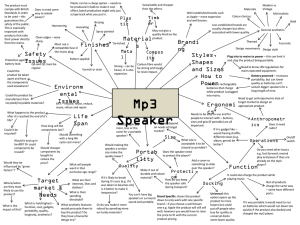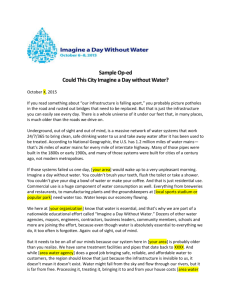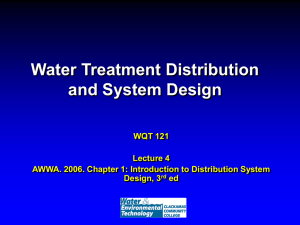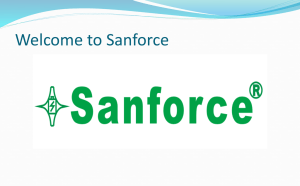Treatment Processes * Water Transmission
advertisement
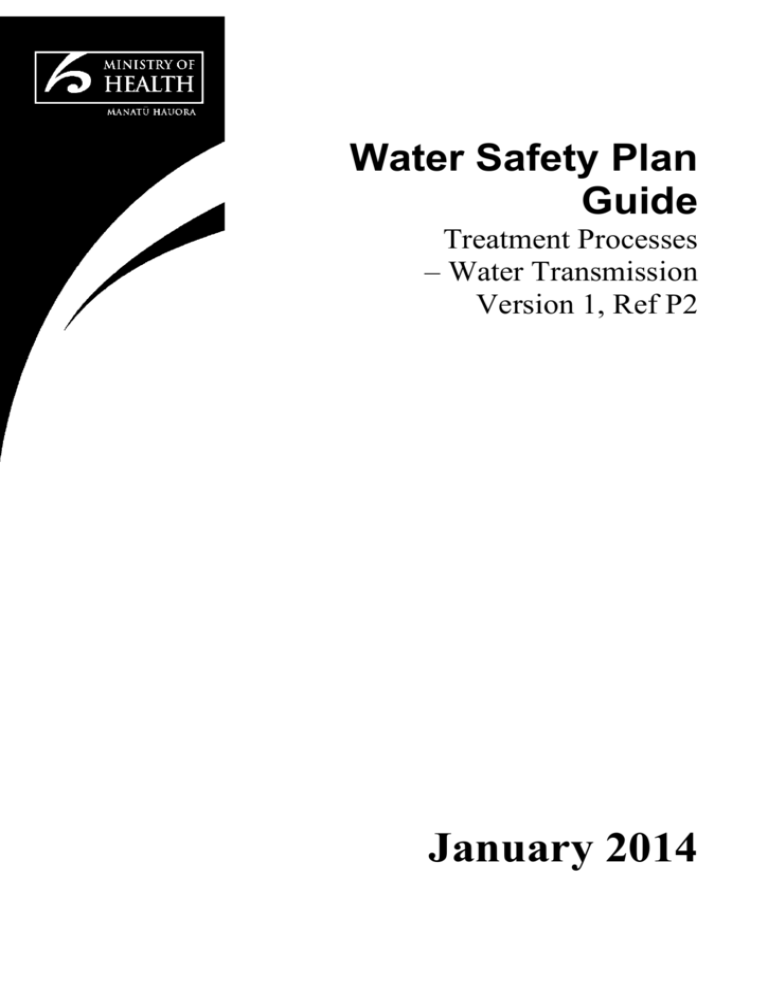
Water Safety Plan Guide Treatment Processes – Water Transmission Version 1, Ref P2 January 2014 Citation: Ministry of Health. 2014. Water Safety Plan Guide: Treatment Processes – Water Transmission, Version 1, ref p2. Wellington: Ministry of Health. Published in January 2014 by the Ministry of Health PO Box 5013, Wellington, New Zealand ISBN: 978-0-478-42712-7 (print) ISBN: 978-0-478-42713-4 (online) Previously published in 2001 as Public Health Risk Management Plan Guide: Treatment Processes – Water Transmission, Version 1, ref p2. This publication’s title and any reference within the text to ‘public health risk management plan’ was changed in January 2014 to reflect the December 2013 legislation change of the term ‘public health risk management plan’ to ‘water safety plan’. No other changes have been made to this document. This document is available at: www.health.govt.nz This work is licensed under the Creative Commons Attribution 4.0 International licence. In essence, you are free to: share ie, copy and redistribute the material in any medium or format; adapt ie, remix, transform and build upon the material. You must give appropriate credit, provide a link to the licence and indicate if changes were made. Contents Introduction 1 Risk Summary 2 Risk Information Table 3 Contingency Plans 7 Water Safety Plan Performance Assessment 8 Ref P2 Version 1, January 2014 Water Safety Plan Guide: Treatment Processes – Water Transmission iii Introduction Water is transmitted through a water supply in large diameter pipes (trunk mains). This Guide is concerned with trunk mains, and also open channels and pressure-break tanks that may be used in some small supplies. If an event occurs during water transmission (ie, something goes wrong with the supply components used to carry water), the following could happen: If contaminants are able to get into the mains, germs and chemicals may cause sickness If sediments containing contaminants in the pipes are stirred up, germs and chemicals may cause sickness when the contaminants are carried into the distribution system If contaminants are able to get into open channel conduits or break pressure tanks, germs and chemicals may cause sickness. Staff health may be at risk from a number of site specific issues when working with trunk mains. These are acknowledged, but are not discussed further as such risks are the subject of health and safety in employment legislation. Trunk mains carry water from the source to treatment, and from the treatment plant through the distribution system. Risks associated with trunk mains following treatment are discussed in other Guides concerned with the distribution system (see Guides D1, D2.1, D2.2, D2.3 and P10). Ref P2 Version 1, January 2014 Water Safety Plan Guide: Treatment Processes – Water Transmission 1 Risk Summary The two greatest risks involved in water transmission are no water flow (see P2.4.1) and contaminating material getting into the mains (see P2.1.1). The most important preventive measures are: keeping asset management plants up-to-date so old mains likely to need attention are identified in good time (see P2.1.1) controlling pressure fluctuations to minimise stress on the system (see P2.1.1). (References in parentheses are to this Risk Information Table.) 2 Water Safety Plan Guide: Treatment Processes – Water Transmission Ref P2 Version 1, January 2014 Risk Information Table Reliable information about water quality is essential for the proper management of a water supply. Knowledgeable and skilled staff are also essential for minimising the public health risks associated with water supplies. Please read the staff training (Guide G1) and the monitoring guides (Guide G2). While we haven’t pointed out every detail of how these documents are linked with the present document, the links are many and are important. Abbreviations: DWSNZ – Drinking-Water Standards for New Zealand Causes Preventive measures Corrective action Checking preventive measures Signs that action is needed What to check Event: CONTAMINATION GETS INTO THE TRUNK MAINS Hazards: Germs; chemical determinands. Level of risk: High1 P2.1.1 Mains breaks. P2.1.2 Inspections. Pressure. Unexplained or regular mains breaks. Where possible, six-monthly physical inspection for deterioration, and always inspect after extraordinary events (floods, slips, etc). Management of pressure fluctuations and peak pressures to minimise stress on the system according to system network plan data. Protect external surfaces from the effects of the climate. Treat water to reduce its corrosiveness (see Guide P8.1). Check and/or modify air valves to minimise entrainment caused by very low or negative pressures. Air release valves entrain contaminated water or air. 1 Asset management plan should identify vulnerable areas and these should be prioritised for remedial work or replacement. Manage pressure fluctuations to avoid very low or negative pressures. Monitor flows from treatment plant and reservoirs (preferably telemetrically) for early warning of potential pressure changes. Make sure water can drain away from around the valve. Pressure. Unexplained contamination. Difficulty in maintaining chlorine residuals. Damaged or missing air valves. Use the findings of the asset plan to prioritise mains replacement, or reprioritise work plan. Consider duplication of mains. Review set pressures. Repair air valves and associated damage. In situations in which contamination enters the mains before treatment, the level of risk should be reduced by adequate treatment processes. Ref P2 Version 1, January 2014 Water Safety Plan Guide: Treatment Processes – Water Transmission 3 Causes Preventive measures Corrective action Checking preventive measures Signs that action is needed What to check Event: CONTAMINATION GETS INTO THE TRUNK MAINS cont’d P2.1.3 Leaks. Management of pressure fluctuations and peak pressures to minimise stress on the system and eliminate negative pressure conditions. Annual leak detection and repair programme. P2.1.4 Incidental damage (eg, floods, slips, vehiclerelated incidents). Quarterly inspection of vulnerable zones with appropriate follow-up during or after incidents (natural disasters, vehicle accidents, etc). Provide adequate physical protection for trunk mains. P2.1.5 Visual inspection. Inspection. Regularity of observed leaks. Unexplained water loss. Number of reported and detected failures. Modify leak detection programme and asset plan. Determine viability of improving level of protection. See Guide D2.3 (D2.3.1.2–D2.3.1.9). Poor repairs of breaks, leaks, incidental damage, and penetration of trunk mains. Event: SEDIMENT CONTAINING CONTAMINANTS STIRRED UP Possible hazards: Germs; iron; manganese; possibly heavy metals; aluminium (from coagulant); organic particulate matter. Level of risk: Low P2.2.1 Sediment or biofilm allowed to develop. P2.2.2 Intake designed to minimise introduction of sediment into the treatment plant. For distribution trunk mains see Guide D2.3 (D2.3.2). See Guide D2.3 (D2.3.2). See Guide D2.3 (D2.3.2). Velocity too high. 4 Water Safety Plan Guide: Treatment Processes – Water Transmission Ref P2 Version 1, January 2014 Causes Preventive measures Corrective action Checking preventive measures Signs that action is needed What to check Event: CONTAMINATION GETS INTO OPEN CHANNEL CONDUITS AND BREAK-PRESSURE TANKS Possible hazards: Germs; chemical determinands. Level of risk: High2 P2.3.1 Stock access to the channel and break tanks. P2.3.2 Surface runoff and subsurface leaching of contaminated water. P2.3.3 Ensure break pressure tanks have a well-fitting lid. Control land use practices in vicinity of open channel, particularly stock and chemical application (fertiliser, pesticides). Evidence of stock having gained access to the channel. Nutrients (depending on the nature of the fertiliser). High E. coli counts. Elevated chlorine demand. Algae of health significance present. Elevated levels of nutrients. Visual evidence of biological growths. Abnormally high turbidity of water reaching plant. Flow. Develop maintenance plan to remove biological growths. Algal toxins (if algae of concern are present). Fence channel and tanks to keep stock clear. Increasing nutrient levels. Microbiological quality. Elevated chlorine demand. Carry out regular checks of the state of the channel, and after heavy rain, and shore up sides as necessary. Microbiological quality. Ensure flow paths prevent regions of slow moving water. Abnormally high turbidity of water reaching plant. High E. coli counts. Control land use practices in the vicinity to reduce nutrient input. Microbiological quality. Riparian margin along channel. Collapse of the channel sides. 2 Turbidity. Deterioration of water quality caused by increased biological activity in shallow, warm open channels. P2.3.4 Fence channel and tanks to keep stock clear. Visual inspection. Temperature. Nutrients (nitrogen and phosphorus). Turbidity. Microbiological quality. High E. coli counts. Elevated chlorine demand. Evidence of stock having gained access to the channel. Replace the open channel with pipes. Erect fence. Provide suitable lid. Replace the open channel with pipes. Replace the open channel with pipes. Initiate checks. Replace the open channel with pipes. Erect fence. The level of risk is high for those supplies using open channels and break-pressure tanks between the source and treatment plant, although treatment, including disinfection, should reduce the level of risk. Ref P2 Version 1, January 2014 Water Safety Plan Guide: Treatment Processes – Water Transmission 5 Causes Preventive measures Checking preventive measures What to check Corrective action Signs that action is needed Event: NO FLOW THROUGH THE TRUNK MAINS Possible hazards: Germs and chemicals that get into the water because of low system pressure; hazards associated with poor hygiene. Level of risk: High P2.4.1 See P2.1.1. Mains breaks. 6 Water Safety Plan Guide: Treatment Processes – Water Transmission Ref P2 Version 1, January 2014 Contingency Plans If an event happens despite preventive and corrective actions you have taken, you may need to consult with the Medical Officer of Health to assess how serious a problem is. Event – High levels of contamination enter a trunk main Indicators: Required actions: Responsibility: Unexplained water loss or observed damage. Observed problems with air valves. Mains break. Pressure drops. Elevated turbidity, microbiological counts or chemical determinand concentrations. Incidents of illness suspected of being linked to events associated with the trunk mains. Increased chlorine demand. Take microbiological samples to check compliance with DWSNZ:2000 Section 3.2.2.2 (water leaving the plant) and Section 3.2.2.3 (in the distribution system) – microbiological and chlorine requirements. If results indicate a transgression follow procedure as set out in Figures 3.2 and 3.3 DWSNZ:2000. If chemical contamination is suspected, monitor concentrations of the suspected determinand and follow the requirements of Section 4.4.1 of DWSNZ:2000. Determine the reason for water loss and leakage, repair and plan for long term preventative measures. Review flushing records and pipework repairs in the area of the repair to confirm all sections of the pipework would have been flushed, and flush again. Monitor chlorine residuals and increase residual to ensure an FAC residual of more than 0.2 mg/L is achieved throughout the distribution system. Confirm that proper work practices for pipe repair were followed. Review laboratory results and take further samples. Record cause of system failure. Modify water safety plan (formerly known as a public health risk management plan, PHRMP) if necessary. Manager designated responsible for the water supply. Ref P2 Version 1, January 2014 Water Safety Plan Guide: Treatment Processes – Water Transmission 7 Water Safety Plan Performance Assessment To make sure that your supply’s water safety plan is working properly, periodic checks are needed. The overview document outlines what needs to be done. The following table provides the detailed information for checking this particular supply element. What to measure or observe: Bacteriological sampling of burst main repairs and mains renewal projects. Job sheets to record procedures used, observations made and problems encountered. Continuous chlorine residual. Minimal to nil consumer complaints about discoloration, staining and taste and odours. E. coli. Review of incident log books. These measurements will also be affected by such things as the performance of the treatment plant. How often: What to do with the results: 8 Bacteriological sampling for three consecutive days after work is completed should be carried out and E. coli should not be detected in any of these samples. If E. coli is detected, advise the MoH and carry out normal corrective procedures (see Section 3.4.1.2 DWSNZ:2000). Chlorine residuals should be measured after every event. Results need to be recorded to meet legislative requirements or to allow water safety plan performance assessment. The WINZ database is good for this. The collected data need to be periodically reviewed to see whether problems with this supply element are developing. This should be done as frequently as the manager responsible considers necessary to minimise risk to public health arising from this supply element. Should the review flag any unusual incidents, indicate that proper procedures are not being carried out, highlight poor laboratory results or indicate that poor water quality is reaching customers, then review the procedures for managing contamination of trunk mains. Evaluate the monitoring results, and any actions taken as the result of having to implement a contingency plan, to see if the water safety plan needs modification – eg, preventive measures are up to date; the contingency plan steps are still adequate; and changes to the mains network are recognised in the plan. Water Safety Plan Guide: Treatment Processes – Water Transmission Ref P2 Version 1, January 2014 Responsibility: Manager designated responsible for water supply. Ref P2 Version 1, January 2014 Water Safety Plan Guide: Treatment Processes – Water Transmission 9
